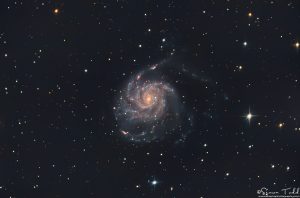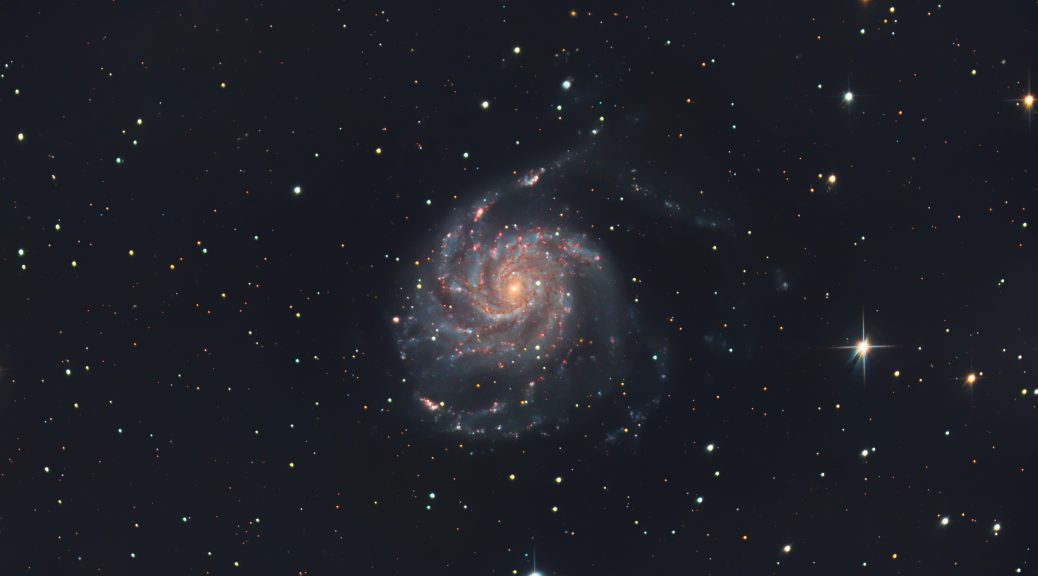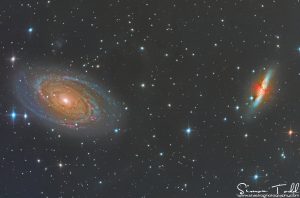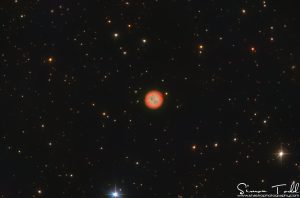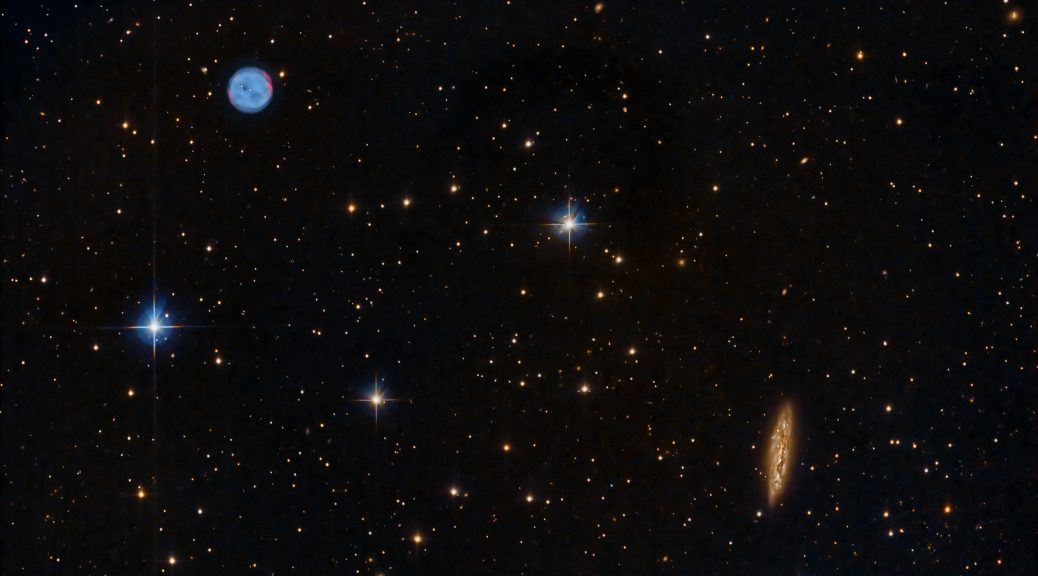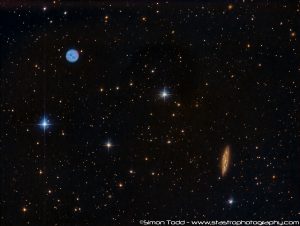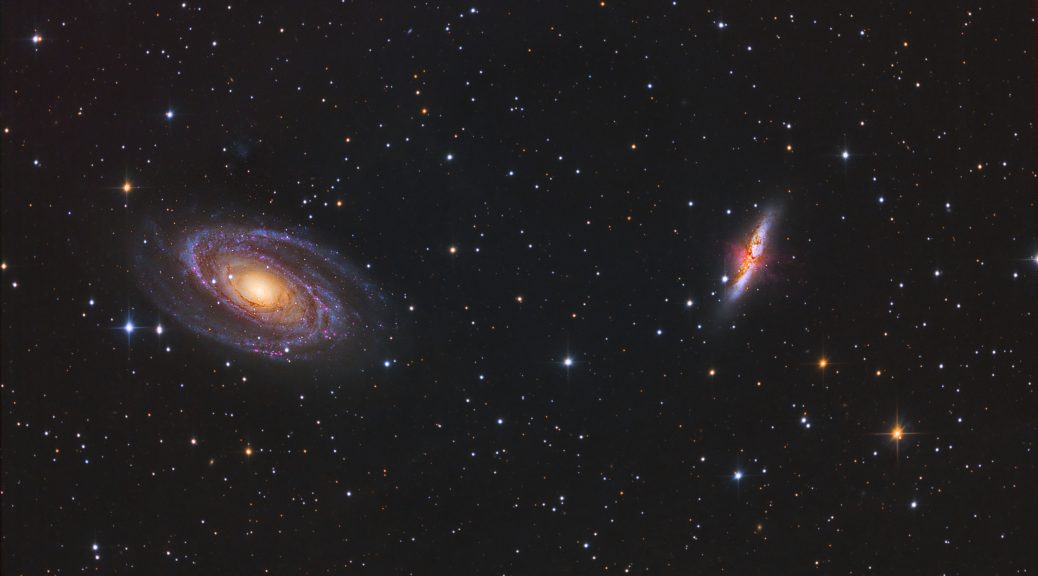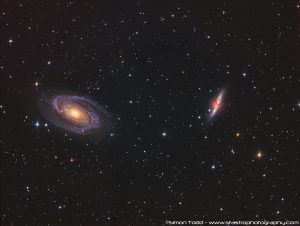M101 / NGC5457 or most commonly known as the Pinwheel Galaxy is a face on spiral galaxy in Ursa Major and has a distance of around 21 million light years from Earth.
The QHY183M picks up quite a lot of the Ha detail in this galaxy without me having to image separate Ha Filter data
Image Details:
101x150S in R
101x150S in G
101x150S in B
Total Capture time: 12.6 Hours
Acquisition Dates: Feb. 27, 2019, March 29, 2019, March 30, 2019, April 1, 2019, April 11, 2019, April 12, 2019, April 14, 2019
All frames had 101 Darks and Flats applied
Equipment Details:
Imaging Camera: Qhyccd 183M Mono ColdMOS Camera at -20C
Imaging Scope: Sky-Watcher Quattro 8″ F4 Imaging Newtonian
Guide Camera: Qhyccd QHY5L-II
Guide Scope: Sky-Watcher Finder Scope
Mount: Sky-Watcher EQ8 Pro
Focuser: Primalucelab ROBO Focuser
FIlterwheel: Starlight Xpress Ltd 7x36mm EFW
Filters: Baader Planetarium RGB
Power and USB Control: Pegasus Astro USB Ultimate Hub Pro
Acquisition Software: Main-Sequence Software Inc. Sequence Generator Pro
Processing Software: PixInsight 1.8.6
